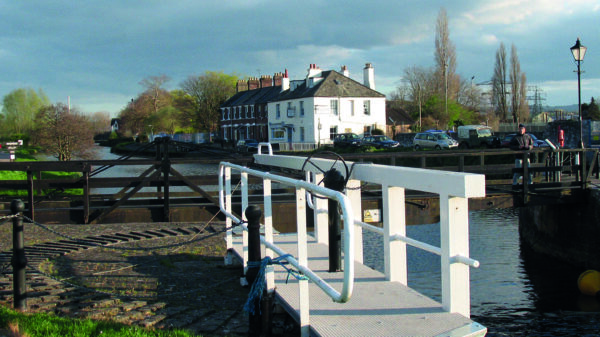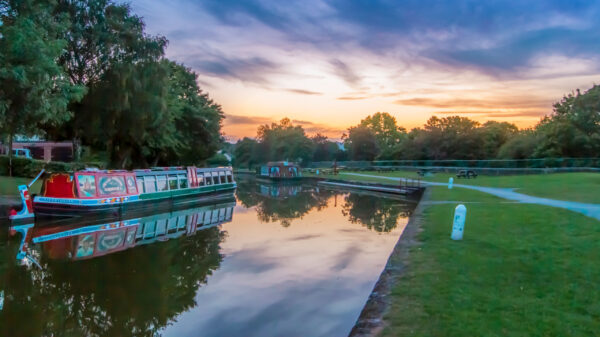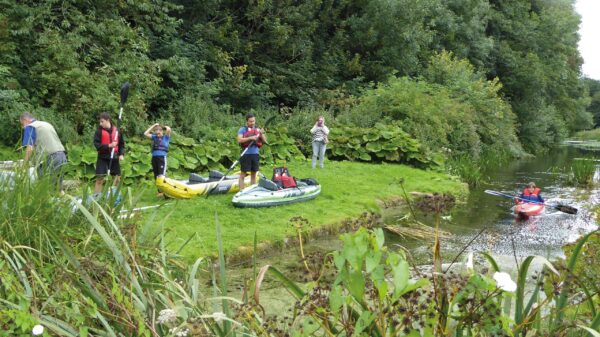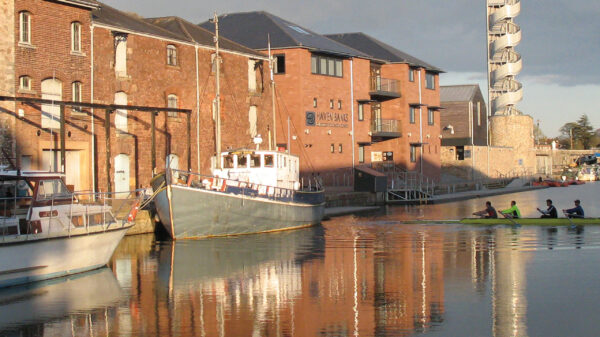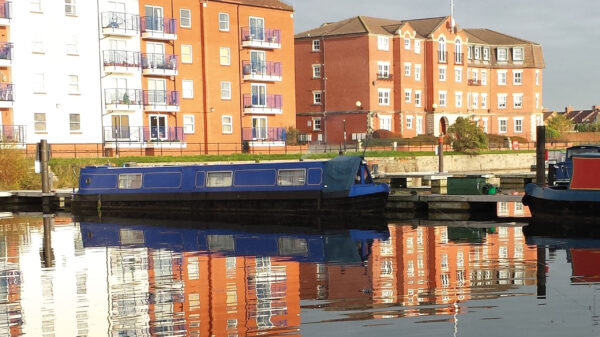About the Exeter Ship Canal
The City of Exeter is built on the banks of the navigable River Exe, giving the city a prosperous port. In the late 1200s, the first of two weirs were built by local landowners, which provided water power for Fulling Mills, but prevented navigation. Restoration only happened in 1550, when the river silted up. Subsequently, the city traders employed John Trew of Glamorgan to build a canal to bypass the two weirs. This was 1¾ miles long with the first pound locks in Britain and joined the river just below Exeter Quay. A new weir was built on the river to maintain the water level and provided water to the new canal. Opening in 1566, it was not a great success and was subsequently improved and lengthened. The Canal Basin in Exeter was built in 1830 to give improved facilities unaffected by flood water. The last commercial traffic on the canal was sewage sludge carried by the Countess Weir in 1998.
[The photo shows moored boats and rowers at Exeter Basin on the Exeter Ship Canal – by Peter Nickol.]


